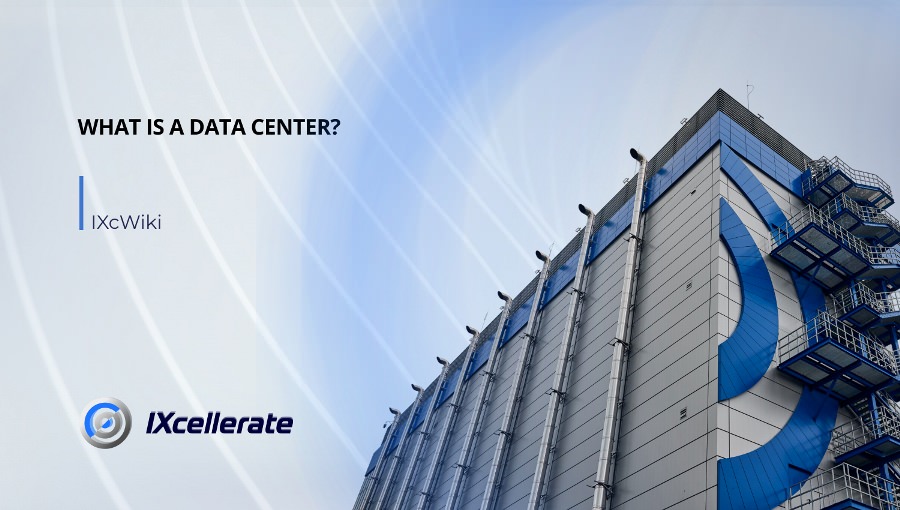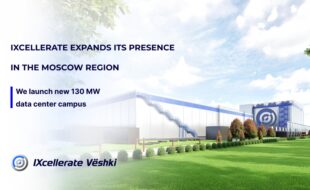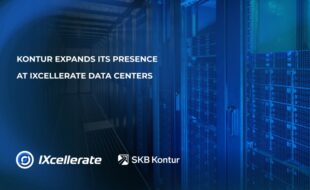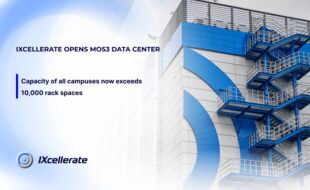
In the era of digital transformation, reliable IT infrastructure is becoming critical to the success of any business.
Companies that want to ensure the uninterrupted operation of their services and protect their data from loss and cyberattacks are increasingly turning to professional solutions—hosting their equipment in data centers.
But what exactly is a modern data center? Let’s take a closer look.
Unlike a conventional server room, a modern data center offers:
- Multi-level power supply systems
- Energy-efficient climate control equipment
- Physical security and biometric access control
- High-speed network connections
- Professional technical support
In today’s world, the development of information technology in all areas of business is impossible without the use of data centers. This solution, which involves renting space for infrastructure, allows companies to focus their resources on their products or services.
In this article, we will look at the different types of data centers, the services they offer, and the existing standards for determining reliability levels.
Types of data centers
Data centers can be divided into several categories depending on their purpose, location, and level of reliability.
Classification by purpose
Although all data centers are designed to work with server equipment and data storage systems, they can have different purposes, types, and levels of reliability.
The main types of data centers are:
- Corporate – owned by a single company and created specifically for its needs. They ensure data security, and only company employees have access to the data.
- Commercial (Colocation) – provide services for renting server space or using virtual resources for various companies.
- Hyperscale – these are large centers created by IT giants such as Amazon or Google. They are designed to work on large-scale projects and can operate without interruption.
- Peripheral (IoT) – small centers located close to the end user. They are used for real-time data processing, for example, in Internet of Things systems.
- Container – mobile centers that can be deployed anywhere. They are housed in special containers and are used for temporary projects, such as construction sites or sporting events.
- Cloud (IaaS, PaaS, SaaS) – provide computing resources and services over the Internet on a “as a service” (XaaS) model. Unlike traditional data centers, where customers host physical equipment, cloud data centers offer virtualized resources that are available on demand.
- Telecommunications – serve as key communication hubs, enabling the operation of Internet service providers, telecommunications operators, and telecom companies.
Tier standards: how to assess data center reliability
Certification requirements are standard for the design, construction, and operation of data centers.
There are four levels of data center reliability:
Tier I (first level) data center
At this level, the data center has basic infrastructure without backup systems, but meets the minimum requirements:
- uninterruptible power supply (UPS) to protect against power surges and short-term outages,
- dedicated area for IT equipment,
- cooling system,
- generator set in case of prolonged power outages.
These elements provide protection against power surges, short-term power failures, and the ability to operate on non-working days.
However, scheduled maintenance or emergency repairs require a complete shutdown of the data center.
- Uptime — 99.671% per year (maximum permissible downtime — less than 28.8 hours).
Where it is used:
- Test and development environments.
- Temporary projects that do not require high reliability.
- Local servers for small businesses.
Tier II data centers include partial redundancy of critical infrastructure. In addition to the basic Tier I requirements, they provide partial redundancy of engineering systems, for example, in the form of backup:
- generator sets,
- UPS (power modules and batteries),
- cooling systems (refrigerators, compressors, pumps, air conditioners, heat exchangers, fans), etc.
Thanks to redundancy, the data center remains operational even if some of the engineering systems fail. However, as in Tier I, maintenance or repairs still require temporary downtime.
- Reduced risk of downtime compared to Tier I, but not complete fault tolerance.
- Annual uptime — 99.741% (maximum downtime — up to 22 hours per year).
Where it is used:
- Corporate server rooms for businesses with moderate availability requirements.
- Hosting providers offering services with acceptable short-term downtime.
- Development and testing where minor delays are not critical.
- Small businesses, startups.
Tier III data centers are highly reliable infrastructures that ensure continuous operation even during scheduled maintenance. Unlike Tier I and II, such data centers are equipped with fully redundant systems for guaranteed and uninterrupted power supply, cooling, and communications, which minimizes the risk of downtime.
Key features of Tier III:
- N+1 redundancy, where:
N is the power required to operate all systems.
+1 is an additional component ready to replace a failed one. This means that if any component (UPS, generator, chiller) fails, it is instantly replaced by a backup without interrupting the operation of the server equipment.
- All IT equipment is connected to two independent uninterruptible power supplies with rechargeable batteries connected to two independent power inputs from different substations. Such a data center has its own backup generator sets with fuel reserves.
- Uninterruptible cooling system. Backup refrigeration units, fans, and air conditioners maintain the temperature even if one of the units fails.
- Non-stop maintenance. Engineers can repair and upgrade systems without shutting down servers, which is critical for banks, cloud providers, and corporate customers.
Availability parameters:
- Uptime: 99.982% per year.
- Maximum downtime: less than 1.6 hours per year.
Where Tier III is used:
- Financial institutions (banks, payment systems).
- E-commerce.
- Large cloud and hosting providers.
Tier IV data centers represent the pinnacle of reliability in the data center industry. They provide unparalleled resilience to failures thanks to a fully redundant infrastructure with physical separation of critical systems. Unlike Tier III, where redundancy allows maintenance to be performed without downtime, Tier IV guarantees continuous operation even if several components fail simultaneously.
Key features of Tier IV:
Full 2N or 2N+1 redundancy, where:
- 2N — duplication of all engineering systems (power, cooling, networks) with independent lines.
- 2N+1 — additional backup component on top of duplication.
- Each system has an isolated counterpart, eliminating single points of failure.
Physical isolation of infrastructure:
- Location: separate building with 24-hour security.
- Power supply: two independent inputs from different substations + backup generators.
- Cooling: two independent heat transfer circuits with separate air conditioners/refrigerators and pumps.
- Networks: separate telecommunications lines.
Protection against any failures:
- Simultaneous failure of the main and backup UPS will not stop operation — a third source is activated.
- Fire, flood, or accident in one zone does not affect redundant systems.
Availability parameters:
- Uptime: 99,995 % per year.
- Maximum downtime: less than 26.3 minutes per year.
Where Tier IV data centers are used:
- National payment systems, federal banks, and stock exchanges.
- Government critical systems.
- Telecom companies, etc.
For ease of comparison of Tier levels, we will construct a table:
| Data center reliability level | Reservation of engineering equipment | Possibility of maintenance without stopping the data center | Total annual downtime, hours | Data center availability, % |
| Tier I | no | no | 28,8 | 99,671 |
| Tier II | N+1 | no | 22 | 99,741 |
| Tier III | N+1 | yes | 1,6 | 99,982 |
| Tier IV | 2(N+1) | yes | 0,43 | 99,995 |
Data center structure and equipment
The data center structure includes certain infrastructure solutions that meet the following basic criteria:
- A certain level of redundancy of the data center’s engineering infrastructure in terms of power supply, climate control, etc.;
- The ability to perform routine maintenance and repairs on equipment without interrupting the operation of the data center and customer server equipment;
- The availability of multiple power distribution paths to the IT load and multiple cooling circuits in the cooling system;
- Requirements for the physical placement of infrastructure components, automation, and continuity of engineering systems have been implemented.
A classic data center consists of three main units, each of which performs important functions:
- Computing unit. Ensures uninterrupted processing and storage of data by the customer’s server equipment. Some data centers offer additional services, such as cloud services and server equipment rental.
- Communication unit. Provides connection of equipment to telecommunications operators’ services, data exchange between client servers, and interaction with users. For reliability, redundant communication channels and protection systems against DDoS attacks and cyber attacks are used.
- Infrastructure unit. Ensures uninterrupted and secure operation of the entire data center and includes:
- Power supply — a multi-level system using ATS (automatic transfer switch), UPS (uninterruptible power supply), and diesel generator sets. The system is capable of operating autonomously for several days.
- Cooling systems — precision air conditioners, liquid-cooled chillers, adiabatic cooling systems with the option of using free cooling (technology that uses outside air temperature to cool air conditioning and ventilation systems without the use of compressor equipment), which increase the energy efficiency of the complex and reduce electricity costs.
- Fire protection — early warning systems for smoke detection, smoke detectors, fire extinguishers, hydrants, water mist fire extinguishing systems, gas fire extinguishing systems (e.g., based on inert gases).
- Monitoring — temperature, humidity, and dust sensors integrated with AI platforms for fault prediction.
- Physical security — separation of customer access between data center rooms, remote access control systems (ACCS), biometric readers, employee arrival, location, and departure tracking, security, video surveillance.
Additionally, large data centers feature environmentally friendly solutions such as renewable energy sources or heat recovery systems.
This structure ensures fault tolerance, energy efficiency, and compliance with international standards (TIA-942, Uptime TIER Standard, ISO/IEC 27001, ANSI/ASHRAE Standard).
Data center services
Remember, the main thing a data center does is host equipment, but now there are a bunch of other services you can get at a data center:
- Colocation — The data center gives you racks, power, cooling, physical security, and access to the network infrastructure. The customer places their own equipment, retaining full control over its configuration.
- Server rental — you can rent servers with the required specifications, and the provider will maintain and support them.
- Virtual server rental (VPS/VDS). The data center allocates virtual machines with guaranteed resources (CPU, RAM, SSD/NVMe) to the customer.
- Cloud services are ready made solutions that include servers, storage, and networks. You can manage your data and applications, while the provider takes care of the technical side.
- Backup is the automatic copying of data to secure data center storage. In the event of a failure, it is possible to roll back to previous versions or completely restore the information.
- Data protection — providers offer protection against cyberattacks and other threats.
- Telecommunications services — providers can arrange high-speed internet and other communication channels, as well as peering connections for traffic exchange.
Choosing a location for your data center
In addition to the structure of the data center, it is important to choose the right location for it. This will determine how reliable and secure your data center will be.
Transport accessibility and logistics
Convenient access roads are critical for both customers and the maintenance of the data center itself. In Russia, where road conditions are often unpredictable, proximity to highways and public transportation increases the attractiveness of a facility for customers. This is especially true for data centers focused on retail customers.
It is also important for data centers to ensure:
- The ability to freely import/export large equipment (e.g., diesel generators or server racks).
- More than one access route to the site to ensure unimpeded delivery of fuel and spare parts for scheduled maintenance of data center infrastructure equipment or in case of incidents. There are also certain requirements for the distance of the site from broadband highways, railways with freight traffic, and airports.
Availability of telecommunications infrastructure
Almost every data center has a telecommunications area where telecommunications operators place their equipment, some of which lay optical cables to provide high-speed communication channels to end customers. There are telecommunications operators that use leased communication channels to provide their services at the data center site.
Recently, there has been a demand for a peering platform that optimizes the exchange of Internet traffic between customers and telecommunications operators to improve the efficiency of telecommunications transport utilization.
It is important that the data center site has several cable duct entries.
Inside the data center itself and the machine rooms, there must be a tray system that allows cable routes to be laid for the provision of communication services via at least four independent routes.
All these mandatory requirements allow the customer to:
- Choose any telecommunications operator present at the site
- Receive high-quality service at a competitive price
- Reserve data access channels and make this access continuous
Fault tolerance of backup sites
If it is necessary to organize a backup site for equipment, the same rules apply as for the main site. Additional evaluation criteria are also introduced for backup data centers:
- Distance from the main data center
- Independent power sources (different power substations, each site has its own diesel generators, etc.)
- Different trunk communication channels.
- Absence of common physical failure risks (for example, both data centers should not be located in the same seismic or flood zone).
Perimeter security
When selecting a site for the primary or backup data center, special attention is paid to the physical security requirements of the territory:
- Distance from residential areas, shopping centers, sports complexes;
- Distance from potentially hazardous facilities (construction sites, high-rise buildings);
- Own territory and complex of buildings;
- 24-hour security with multiple levels of access:
- to the territory,
- to the data center building,
- to office and warehouse premises,
- to machine rooms,
- to specialized rooms where critical infrastructure elements are located.
Thus, protection is ensured by compliance with physical security standards, in particular, the installation of fences with specific characteristics, the use of video surveillance systems, motion sensors, video recording archives, the constant presence of security personnel on site, the installation of biometric readers, etc.
External risks: from poplar fluff to floods
External risks to data centers are divided into two main types:
- Natural risks: floods, fires, tornadoes and typhoons, earthquakes, the presence of old and dead trees (poplar, birch, maple) in the immediate vicinity of the data center facilities.
- Technological risks: insufficient strength of data center structures, damage to cable ducts, structural damage to the building, destruction of one of the access routes to the site.
To reduce these risks, measures are taken, which we discussed in the sections “Choosing a location for the data center” and “Perimeter security,” as well as the use of monitoring systems: These systems provide online information about undesirable events and abnormal situations (temperature violations, fire, leaks, smoke).
Conclusion
Modern data center infrastructure is created using advanced technologies, which guarantees:
- Continuous operation of IT equipment and round-the-clock access to customer data;
- Reliability of key systems – power supply, cooling, and physical security;
- Flexibility to scale to growing loads and optimal resource allocation for maximum efficiency.
This comprehensive solution provides stability, security, and adaptability to any business needs.



